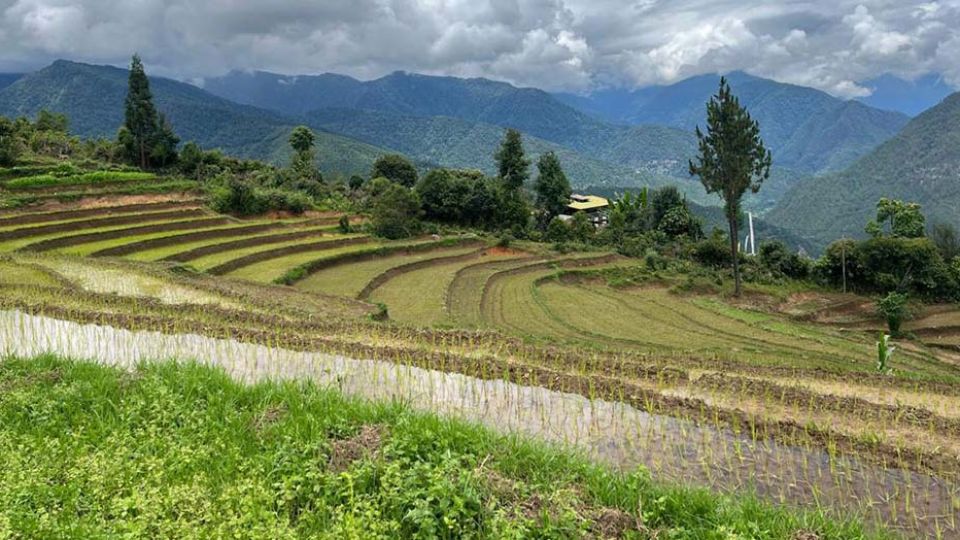August 7, 2024
PUNAKHA – Inconsistent rainfall patterns and drying water sources are impacting paddy yields in Punakha, a dzongkhag renowned for producing varieties of rice in the country.
Data indicate impacts of climate change as a primary factor for the decrease in the overall yield. Punakha, known for rice production, harvested 7,761 MT of irrigated paddy in 2023. It is, however, a decrease of 299 MT from the previous year.
According to the Integrated Agriculture and Livestock Census of Bhutan 2023, there were 2,272 growers of irrigated paddy with a sown area covering 3,803.81 acres and harvest area of 3,685.03 acres.
This decline is significant as Punakha, along with Paro and Wangdue, are traditionally the top producers of irrigated paddy. Punakha contributed 19 percent, Paro (17 percent), and Wangdue (11 percent) respectively to the national production.
In 2022, Punakha harvested 8,059 MT of irrigated paddy, which was 1,549 MT more than in 2021. Punakha dzongkhags accounted for the highest production of irrigated paddy in 2022.
Besides the impact of climate change, farmers are also attributing the high cost of production to the declining yield. High daily wage (as much as Nu 1,000 per day), prevalence of absentee land owners are some of the factors farmers cite for the decline in paddy cultivation.
The deputy chief agriculture officer (DCAO), Gaylong, said paddy production in 2023 declined primarily because of shortage of water. “Farmers were not able to transplant paddy on time, which affected the yield. Additionally, farmers in Guma gewog left their land fallow due to a lack of water,” he added.
Last year, Guma gewog had left 32.65 acres of wetland uncultivated followed by Chhubu with 10.91 acres and Talo with 10.88 acres.
The deputy chief said production would not have declined had the paddy fields in these gewogs been cultivated. He said that paddy seedlings had dried up while fields near the riverbanks used water pumps to battle the water shortage for paddy plantation.
Meanwhile he said due to the climate change the water sources are also getting smaller as compared to the past.
However, farmers could expect a good harvest as timely rainfall this year enabled farmers to complete paddy transplantation on time.
Punakha has 7,238.05 acres of wetland. Guma gewog has the highest with 965 acres, followed by Dzomi with 932.5 acres, and Toedwang with 930 acres. Goenshari has the least wetland area with 221.69 acres, followed by Lingmukha with 276 acres and Talo with 387 acres.
Punakha has 11 gewogs which includes Baarp, Chubu, Dzomi, Goenshari, Guma, Kabjisa, Lingmukha, Shengana, Talo, Toepisa, and Toedwang.
There are varieties of rice produced in Punakha and the popular rice varieties include Nab-Ja, Tan-Tshering, Shelngap-Maap, Khamtey, Dago Yangkum, IR-64 and Bondey (Scented Rice).
Prices range from Nu 140 to Nu 170 per drey (about 1.5 kg), while Bondey is the most expensive, costing about Nu 200 per drey.
Dzomi gewog is one among the top paddy producers in the dzongkhag.


